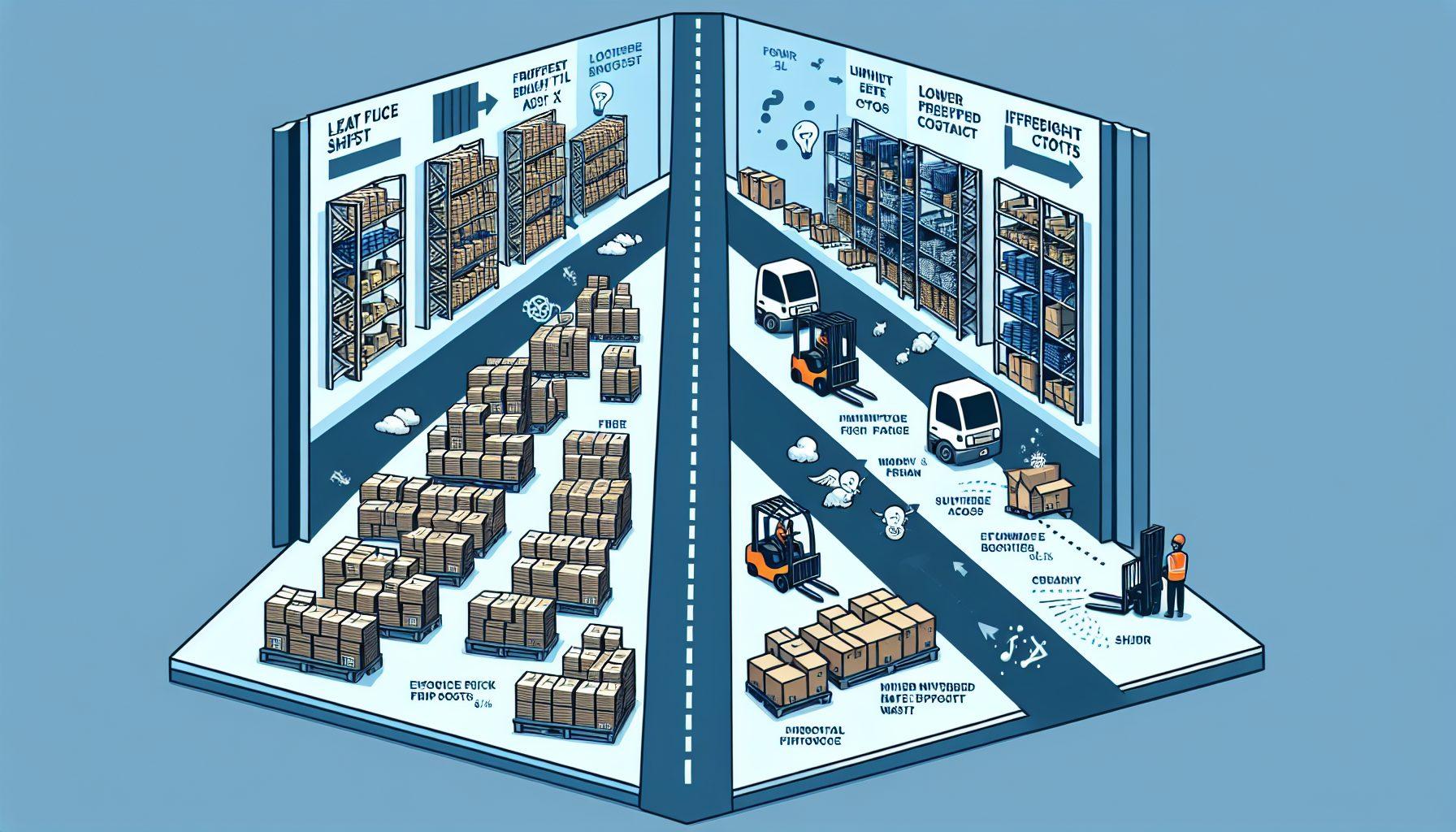When it comes to running a successful warehouse operation, optimizing the layout of your facility plays a crucial role in improving efficiency, productivity, and ultimately, reducing freight costs. The warehouse layout directly impacts the movement of goods, picking and packing processes, and overall operational flow.
The Importance of Warehouse Layout
Having an optimal warehouse layout is essential for several reasons. First and foremost, it ensures smooth and efficient operations within your facility. The layout should be designed in a way that reduces unnecessary movement and minimizes the time it takes to pick, pack, and ship products. A well-planned warehouse layout also maximizes the use of available space, allowing for better organization and storage capacity.
Furthermore, an optimized warehouse layout promotes better safety practices. By strategically placing equipment and creating designated areas for specific tasks, you can significantly reduce the risk of accidents and injuries. This not only protects your employees but also saves you from incurring costly medical bills and potential downtime.
Click here to evaluate your current warehouse layout.
The Impact on Freight Costs
Freight costs are a significant expense for any warehouse operation. By optimizing your warehouse layout, you can minimize these costs and make a positive impact on your bottom line. Here are a few key ways in which the layout affects your freight costs:
1. Reduced Travel Distance
An inefficient warehouse layout often results in excessive travel distances for workers or automated equipment. This means more time and energy are wasted moving goods from one location to another. By reorganizing your layout to minimize travel distance, you can decrease the amount of fuel or electricity consumed, leading to reduced freight costs in the long run.
2. Improved Loading and Unloading Processes
The layout of your loading and unloading areas can greatly impact the time it takes to move goods in and out of your warehouse. An optimized layout with well-defined loading and unloading zones can streamline these processes, reducing wait times and ensuring a smooth flow of goods. Ultimately, this efficiency translates into faster turnaround times and lower freight costs.
3. Better Space Utilization
An effective warehouse layout maximizes the use of available space, enabling you to store more products without the need for additional square footage. This can lead to significant savings on warehousing costs and potentially eliminate the need for off-site storage facilities. By utilizing vertical space and implementing intelligent storage systems, you can optimize inventory management and reduce the need for multiple shipments or expedited deliveries.
4. Minimized Inventory Damage
A well-designed warehouse layout takes into consideration the fragility and sensitivity of certain products. By properly segregating and organizing your inventory, you can minimize the risk of damage during handling and storage. This ensures that you don’t incur unnecessary costs due to damaged goods, returns, or replacements. Additionally, it reduces the need for extra packaging or insurance, further reducing freight costs.
5. Enhanced Order Accuracy
Efficient warehouse layout design also plays a vital role in improving order accuracy. By properly segregating products and implementing clear labeling or location systems, you can minimize picking errors and improve order fulfillment rates. This reduces the need for returns or replacements due to incorrect shipments and avoids associated freight costs.
It is clear that optimizing your warehouse layout can lead to significant savings in terms of freight costs. By investing in warehouse optimization solutions, such as those provided by HCO Innovations, you can take advantage of their expertise in enhancing safety, productivity, and efficiency within your warehouse operations. Their warehouse layout evaluation services can help identify areas for improvement and provide tailored recommendations to optimize your facility.
In conclusion, a well-designed warehouse layout is vital for reducing freight costs and improving overall operational efficiency. By minimizing travel distances, streamlining loading and unloading processes, optimizing space utilization, minimizing inventory damage, and enhancing order accuracy, you can ensure a smooth flow of goods while saving on freight expenses. Consider partnering with warehouse optimization experts to evaluate and enhance your current warehouse layout, ultimately driving down costs and increasing profitability.

